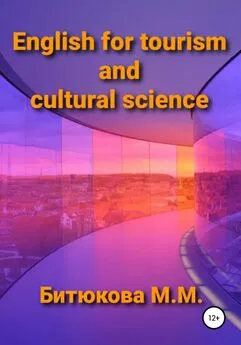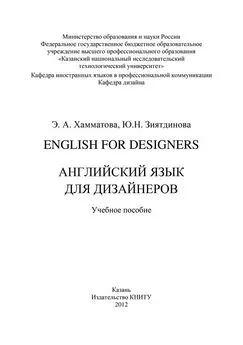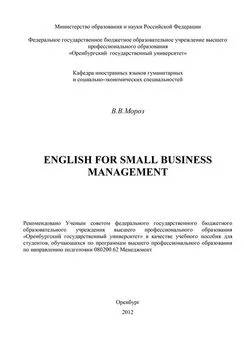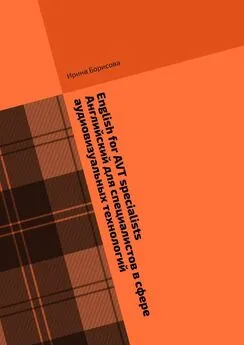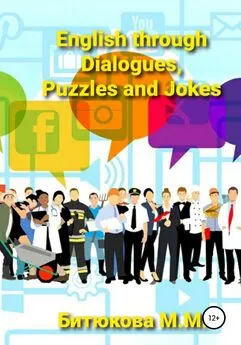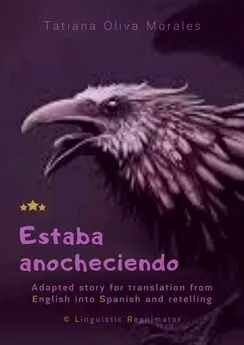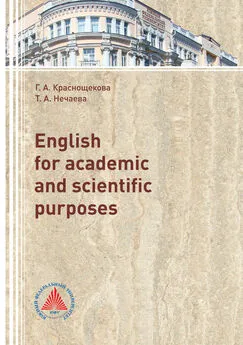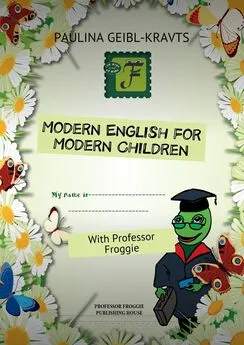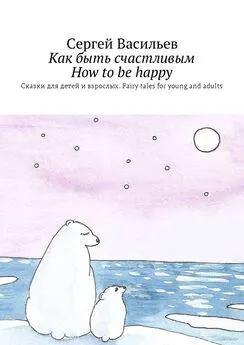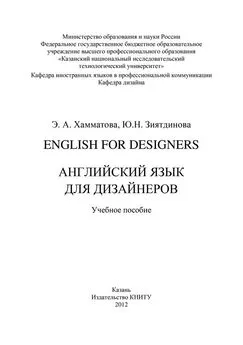М. Битюкова - English for tourism and cultural science
- Название:English for tourism and cultural science
- Автор:
- Жанр:
- Издательство:неизвестно
- Год:2020
- ISBN:нет данных
- Рейтинг:
- Избранное:Добавить в избранное
-
Отзывы:
-
Ваша оценка:
М. Битюкова - English for tourism and cultural science краткое содержание
English for tourism and cultural science - читать онлайн бесплатно ознакомительный отрывок
Интервал:
Закладка:
After Lenin’s death the city was renamed into Leningrad .
For decades Leningrad was glorified by the Soviet propaganda as "the cradle of the revolution" and "the city of three revolutions", many spots related to Lenin and the revolutions, such as the cruiser Aurora, were carefully preserved. Many streets and other toponyms were renamed accordingly.
During World War II, Leningrad was besieged by Nazi Germany and co-belligerent Finland. The siege lasted 872 days from September 1941 to January 1944. The Siege of Leningrad was one of the longest, most destructive and most lethal sieges of major cities in modern history. It isolated the city from most supplies except those provided through the Road of Life across Lake Ladoga, and more than a million civilians died, mainly from starvation. Many others were eventually evacuated or escaped by themselves, so the city became largely depopulated. For the heroic resistance of the city and tenacity of the survivors of the Siege, in 1945 Leningrad became the first city in the Soviet Union awarded the title Hero City.
Now St. Petersburg is Russia’s second largest and Europe’s fourth largest city (by city limit) after Moscow, London and Paris. The city has 5.4 million inhabitants, and over 6 million people live in its vicinity.
St. Petersburg is situated on 44 islands in the Neva River’s delta and is famous for its embankments, museums and, of course, for its magical summer White Nights, which begin at the start of June and last to the middle of July.
Among cities of the world with over one million people, St. Petersburg is the northernmost. The Historic Centre of Saint Petersburg and Related Groups of Monuments constitute a UNESCO World Heritage Site. It is a major European cultural center, an important Russian port on the Baltic Sea, it has been Russia’s political and cultural centre for 200 years. And sometimes it is referred to as the northern capital of Russia.
Excursions
Sightseeing tour(by bus, with a guide/interpreter; duration – about 4 hours). You will see Nevsky Prospect, Admiralty, the cradle of the city – Peter and Paul’s Fortress, St. Isaac’s Cathedral, legendary cruiser Aurora, Bronze Horseman, Spilled Blood Cathedral and others.
The City Tour comments with a drive along Nevsky Prospect towards Palace Square and the Winter Palace. From Vasilyevsky Island you may enjoy outstanding architectural features such as Peter and Paul Fortress and the five buildings of the Hermitage.
The tour continues onto the main building of St. Petersburg University, the imposing St. Isaac’s Cathedral, the monument to Peter the First, known as the Bronze Horseman, and Mariinsky Palace. Other famous sights include Nikolsky Cathedral, which is an active Russian Orthodox Church.
Then you will see Rastrelli Square, Smolny Cathedral and Smolny Institute, where you will be told about events of the Revolution of 1917.
After a drive along Nevsky Prospect you return to Arts Square with its beautiful buildings, housing the Mussorgsky Opera and the Ballet theatre and the Russian Museum.
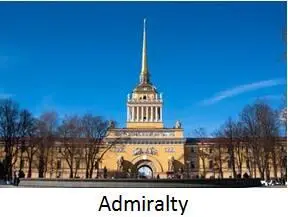
City tour + Peter and Paul’s Fortress(by bus, with a guide/interpreter; duration – 4 hours).
The tour will take you throughout the historical center of St. Petersburg and includes spectacular views of the Neva river, Griboyedov canal, Moika canal, many bridges connecting the city islands, the Old Holland area of the city and trips to 2 main islands of Petrogradsky and Vasilyevsky.
The tour will introduce you to Nevsky Prospect – the city’s famous boulevard, the Winter Palace, other palaces and churches and to the areas of the city formerly inhabited by Dostoyevsky, Rasputin and numerous Russian princes and counts.
You will then visit Peter and Paul’s Fortress.
The fortress was founded by Peter the Great in 1703. Besides the ancient fortifications, the fortress includes the Peter and Paul’s Cathedral, built in the early 18 thcentury. The bell-tower makes Peter and Paul’s Cathedral the tallest building in St. Petersburg (122.5 meters or 404 feet 3 inches high).
The cathedral includes the burial vault of Peter the Great and other Russian Tsars, the museum of Trubetskoy Bastion prison and the expositions: the History of St. Petersburg, History of the Imperial Mint as well as a printing workshop and the museum of space exploration and missilery. It is also possible to walk along the walls of the fortress and observe the fabulous architecture of the surrounding areas.
Today the fortress is one of St. Petersburg’s major tourist attractions and has become the emblem of the city.
Open: Thursday-Monday from 11.00 am to 5.00 pm, Tuesday to 4.00 pm.
Church Tour(by bus, with a guide/interpreter; duration – 3 hours).
During this tour you will get acquainted with the most famous cathedrals and churches of the city starting with St Isaac's Cathedral.
It was originally the city's main church and the largest cathedral in Russia.
It was built between 1818 and 1858, by the French-born architect Auguste Montferrand, and became one of the most impressive landmarks of the Russian Imperial capital. One hundred and eighty years later the gilded dome of St. Isaac's still dominates the skyline of St. Petersburg.
The cathedral's facades are decorated with sculptures and massive granite columns (made of single pieces of red granite), while the interior is adorned with incredibly detailed mosaic icons, paintings and columns made of malachite and lapis lazuli.
Open: Thursday-Monday from 11.00 am to 5.00 pm.
The next stop will be at the Church of the Savior on the Spilled Blood(or just the Church on the Blood).
This marvelous Russian-style church was built on the spot where Emperor Alexander II was assassinated on March 1, 1881. Constructed between 1883 and 1907, the church was designed in the spirit of the 16 thand 17 thcentury Russian architecture, inspired particularly by St Basil's Cathedral on Red Square in Moscow.
The interior of the church, a memorial to the late Emperor Alexander II, was decorated with different shades of marble and several thousand square yards of mosaic.
This has to be one of the city's most beautiful sights and a great spot for taking pictures.
Open: Friday-Tuesday from 11.00 am to 6.00 pm.
Dostoevsky tour(by bus, with a guide/interpreter; duration – 4 hours).
Dostoevsky Walk . You will see ‘the other side’ of St. Petersburg – old slum areas around the Hay Market, a maze of small lanes and courtyards, straight out of the writer’s novels. Sites from “Crime and Punishment”.
Dostoevsky Museum . Arranged according to the original interior design of the great writer’s last apartment. On display there are documents, photographs and personal belongings of the writer. The exhibition outlines Dostoevsky’s life and work.
Open: daily except Mondays and last Wednesday of every month, from 11.00 am to 5.00 pm.
The Neva and the Bridges(by boat; duration – 1,5 hours)
Nevsky is crossed by three canals which are an integral part of St. Petersburg's beauty. There are a great number of rivers and canals in the city – it is a city "on water". That is why it is often referred to as "the Northern Venice" or "the Northern Amsterdam". There is no pleasure like taking a wonderful boat trip along the rivers and canals of the "bridge city".
Oh, the bridges! They will take your breath away. There are about 342 bridges in the city, and among the most beautiful ones are the Palace Bridge, the Trinity Bridge, the Foundry Bridge and the Bridge of Peter the Great across the Neva river, and the Anichkov Bridge across one of the canals – the Fontanka river. It is situated right in the Nevsky Prospect and is considered to be the most romantic place in St. Petersburg! The Anichkov Bridge is so famous and loved by all for its four beautiful sculptures of men and horses! They are so expressive and dynamic that you would think they are alive! And each of the sculptures is different!
Shipping season is from April 19 to September 30; bridges open from May to late October according to a special schedule.
Museums (in the city)
The Hermitage Museum(on foot, duration – 3 hours).
The Hermitage Museum is Russia’s best gallery of world art, one of the most prominent art museums in the world and definitely the main tourist attraction of St. Petersburg.
The museum was founded in 1764 when Catherine the Great purchased a collection of 255 paintings from the German city of Berlin. Today, the Hermitage boasts over 2.7 million exhibits and displays a diverse range of art and artifacts from all over the world and from throughout history (from Ancient Egypt to the early 20th century Europe).
The Hermitage’s collections include works by Leonardo da Vinci, Michelangelo, Raphael and Titian, a unique collection of Rembrandt and Rubens, many French Impressionist works by Renoir, Cezanne, Manet, Monet and Pissarro, numerous canvasses by Van Gogh, Matisse, Gauguin and several sculptures by Rodin. The collection is both enormous and diverse and is an essential stop for all those interested in art and history.
The experts say that if you were to spend a minute looking at each exhibit on display in the Hermitage, you would need 11 years before you’d seen them all.
Open: Tuesday-Sunday from 10.30 am to 5.00 pm.

Russian Museum
The State Russian Museum is the world’s largest museum of Russian art. It is located in the very center of St Petersburg, just of the city’s central magisterial, Nevsky Prospect. The museum is housed in the former Mikhailovsky Palace, a stunning monument of Empire architecture.
The collection of the Russian Museum numbers some 400,000 works and covers the entire history of Russian fine art from the 10 thcentury to the present day. It reflects virtually every form and genre of art in Russia, including a unique collection of Old Russian icons, works of painting, graphic art and sculpture, decorative and applied art, folk art and numismatics, as well as the world's finest collection of Russian avaunt-garde.
If you walk from the main building up to Nevsky Prospect and then turn to the right, you can see the plastic front of the oldest Stroganov Palace, named after its owners, the Stroganov family.
Then you can have a wonderful trip upon embankment of the Moika river. When you come to Mars Square, you can see to the left the Marble Palace, built in the late Neoclassicism style. And to the right you can see the romantic silhouette of St. Michael's (Engineers) Castle.
Open: Wednesday – Monday from 10.00 am to 5.00 pm.
Kazan Cathedral
The cathedral is named after the miracle-working icon of Our Lady of Kazan – the protectress of the Imperial House of Romanov – which was kept here. The cathedral was put up in 1811 by architect Andrey Voronikhin on Nevsky Prospect – the main street of the city.
It was conceived as a replica of St. Peter's Cathedral in Rome. It has the colonnade that is similar to that of Bernini. But there are certain differences between the two constructions and Kazan Cathedral has its own inimitable charm and brilliance. In 1811-1858, Kazan Cathedral was the main cathedral of the city. In front of it there are two monuments to the field marshals who defeated Napoleon in fearless battles – Kutuzov and Barklay de Tolly. Mikhail Kutuzov is buried inside the cathedral.
Читать дальшеИнтервал:
Закладка:
